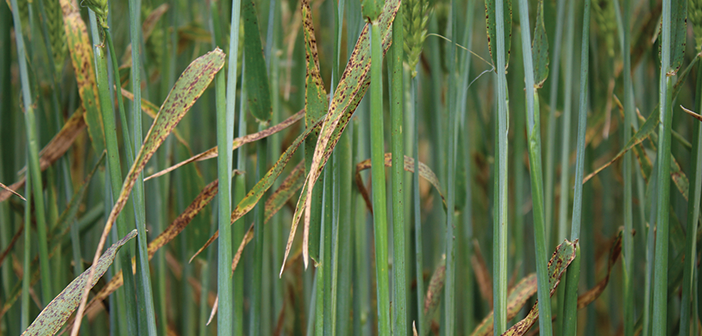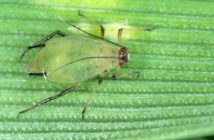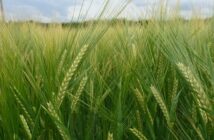As dry weather continues across much of the UK, barley crops will likely face greater pressure from stress-related diseases such as ramularia.
“Although the lack of rainfall is slowing down the usual wet weather diseases like rynchosporium and net blotch, it has exacerbated crop stress, which is letting issues like ramularia, mildew and rust get a foothold in crops,” says Hutchinsons head of integrated crop management, David Howard.
“I suspect ramularia may appear in crops shortly due to the stress brought about by rapid growth, dry weather, and diurnal temperature fluctuations.”
This risk must be considered when planning imminent T2 fungicide applications, he advises.
“Traditionally, the T2 fungicide application in barley has been regarded as less important than the T1 spray, but given the level of stress in crops it could be key in managing ramularia risk this season.
“The ramularia pathogen appears to be evolving rapidly, with increased resistance to SDHIs, azoles, and strobilurins seen last year. The combination of these two factors suggests it is essential to ensure ramularia is adequately covered at T2.”
Act early
Traditionally, growth stage 45-49 has been the key timing for reducing ramularia in barley, with many T2s often applied at the ‘paintbrush stage’ as awns begin to emerge (GS 49).
However, Mr Howard says it may be necessary to treat crops slightly earlier this year, from flag leaf up to booting (GS 39-45), in order to manage the increased disease risk. This is particularly true if plant growth regulation is also required.
“We already have reports of flag leaves visible in some areas, which places even greater importance on the GS 39-45 timing, as it will be key for both growth regulation and disease management, to mitigate against the risks of big canopies, particularly where a T0 was not applied due to weather constraints.”
As with wheat, the gap between T1 and T2 should not exceed four weeks, he notes.
T2 options
The most effective active ingredient against ramularia is pydiflumetofen, which, when partnered with prothioconazole, provides strong protection against all of the main disease threats, Mr Howard says.
Fluxapyroxad + Mefentrifluconazole also offers good activity on ramularia, rhynchosporium, brown rust and net blotch, although he reminds growers that timing and total dose restrictions apply to the use of fluxapyroxad in crops for malting, so care is needed in such situations.
Including folpet with the T2 could be a useful addition, as trials suggest the multisite can improve ramularia protection, even when partnered with the strongest chemistry, he adds. “Folpet now has a label claim for the reduction of ramularia and is active on resistant strains.”
“T2 applications are even more important on hybrid varieties due to the large flag leaf and brown rust weakness, especially if folpet has not already been included in the program,” he adds.




